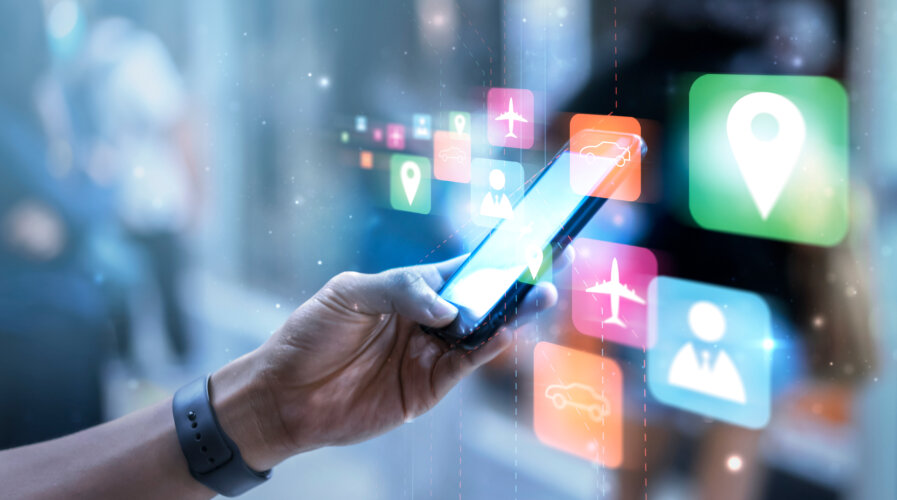
(Source – Shutterstock)
The new face of travel: Generative AI’s transformative impact on tourists and talent
Article by Ray Frederick, Chief Technology Officer of Traveloka
Clear, turquoise water stretches beyond the horizon. The soothing sound of waves meshes with a delightful aroma of seared seafood served by the sea – all before the trip begins. As far as detailed itineraries go, travel planning could one day center around generative artificial intelligence (AI) that can create hyper-realistic previews with one sentence, “Plan me a summer holiday to Bali”.
Generative AI is a rising digital star. Skyrocketing to fame via popular applications such as ChatGPT and Midjourney, and now GPT-4, it can generate original content like images and text from a prompt. That will be a powerful tool for the travel industry if we can unlock its full potential, with 98% of people researching trips online.
Travelers today crave more personalization, as 74% of them want an experience that meets their expectations rather than worry about the cost. Generative AI can take them a step closer with a fully end-to-end booking journey, from automated support to tailored recommendations.
The other side of the screen will see employees equipped with digital skills to meet evolving travel needs. Contrary to certain beliefs that technology will eventually replace humans, we should cautiously embrace its potential and develop further in our roles.
The power of generative AI is clear. It can reshape a tech-savvy workforce that elevates the travel industry, and travelers can rely on digital solutions to travel more and plan less. However, as with the beginning of all things special, does this dream outweigh its risks?
An AI-powered travel efficiency

Ray Frederick, Chief Technology Officer of Traveloka
Technology is central to travel. When it comes to customization, 86% of travelers are keen on hotels that use AI to offer curated room rates, food options, and discounts. For example, global luxury hotel company Rosewood Hotel Group doubled down on personalization by using customer-volunteered data to tailor guest experiences. From preparing customers’ favorite tea to accommodating requests for fruits ahead of arrival, the chain drives digitalization while maintaining strong connections with patrons.
Here’s where the opportunities lie. Businesses whose customers consent to share their data, for example, can add a layer of personal touch by recommending options according to past bookings and preferences. This saves time for, say, business travelers when booking multiple trips.
But with generative AI, the travel industry can soar by producing stunning immersions for travelers to make more informed decisions. Combined with its current capabilities in analyzing weather patterns, attractions, and local cuisine, the technology can help travelers plan their trips better.
For instance, it is not difficult to envision someone researching Vietnam’s Ha Long Bay using generative AI and virtual reality. By integrating these two technologies, they could find themselves surrounded by clear waters and towering cliffs, allowing them to “feel” the atmosphere before they even make a booking.
Tapping tech for talent
Another use of generative AI in travel is to fill talent gaps. With popular Southeast Asian destinations, including Phuket and Chiang Mai in Thailand, suffering from COVID-induced labor shortages, adapting to AI is a sound, forward-looking strategy.
Apart from using AI-powered chatbots to handle customer inquiries and reservations, travel companies are testing ChatGPT’s ability to develop itineraries. Investing in these technologies helps companies to bridge the manpower crunch as generative AI goes beyond what normal chatbots can do – think conversational replies in place of template ones.
The bigger benefit, however, is empowering employees. With AI concierges able to handle most manual tasks proficiently, organizations can optimize staffing levels and train workers to build and maintain such high-level technological infrastructure. In fact, OpenAI, the firm behind ChatGPT, recently launched plug-in support that could make development more straightforward.
These opportunities open new avenues for employees to upgrade their skills. This is good news for those seeking greater value at work, as more than half of 3,500 employees surveyed by Gartner worldwide said that the pandemic left them questioning the purpose of their work. When humans and AI combine, companies can strengthen their workforce while improving long-term employee satisfaction.

(Source – Shutterstock)
The sustainable and financial challenge
Yet, adopting generative AI comes with a huge financial strain. High costs of training and upkeeping models remain a deterrent, especially for small and medium-sized enterprises with limited cash flow. Experts have estimated that more than US$4 million is required to train a large language model like GPT-3, although, in early March, OpenAI reduced the cost of its ChatGPT application programming interface. This greatly lowers a significant barrier to entry.
AI’s environmental impact is also a concern. A report by the University of Massachusetts revealed that training a single AI model can generate carbon equivalent to the lifetime emissions of five cars.
A silver lining is that researchers from Singapore are currently trying to make AI more sustainable, with one approach involving training models with only the most relevant data to prevent massive carbon output.
These are exciting times, and there is no questioning generative AI’s pivotal role in revolutionizing the travel industry. But how we employ it is critical. When used responsibly, it has the potential to reshape the experiences of travelers and talent to create an equitable future for all.
The views expressed in this article are of the author and do not represent the views of Tech Wire Asia
READ MORE
- Strategies for Democratizing GenAI
- The criticality of endpoint management in cybersecurity and operations
- Ethical AI: The renewed importance of safeguarding data and customer privacy in Generative AI applications
- How Japan balances AI-driven opportunities with cybersecurity needs
- Deploying SASE: Benchmarking your approach


